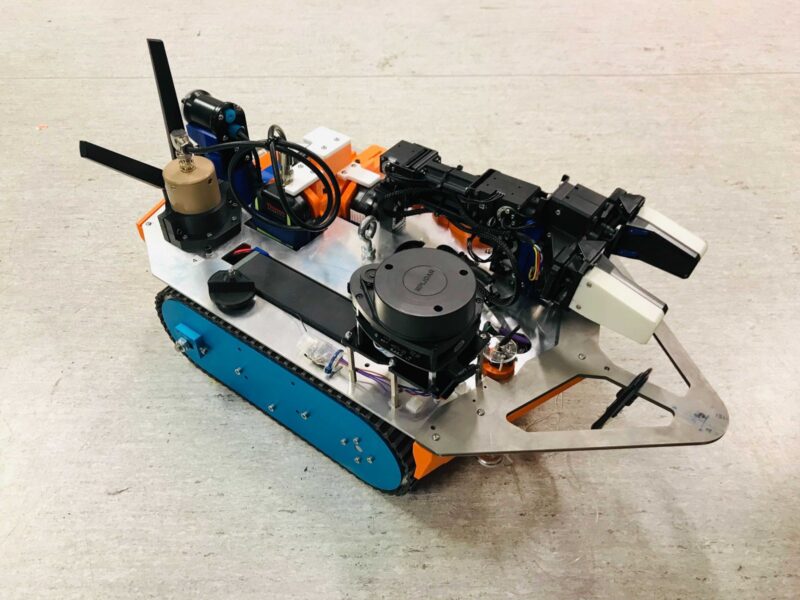
Radioactive robot Lyra named Best Invention of 2022
A radioactive robot developed by The University of Manchester researchers has been awarded Best Invention in 2022 by Time Magazine.
The robot, called Lyra, is one example of mobile robotic platforms designed for inspecting hazardous environments and is a groundbreaking invention that can change how people live, work, and think about what is possible.
Lyra was built by researchers at The University of Manchester, working within the Robotics and Artificial Intelligence for Nuclear (RAIN) Hub and with considerable guidance from technical and operations staff at Dounreay Site Remediation Ltd (DSRL). The technology is commercially available through Ice Nine Ltd.
In April, Lyra completed a survey of a radioactive ventilation duct below a disused laboratory at the Dounreay nuclear complex. It also used Lidar, a detection system similar to radar but which uses lasers, and took swabs using a manipulator arm.
The robot traversed 140m of duct from a single entry point. It provided operators with detailed radiological characterisation information that can now be used to help plan safe and efficient laboratory decommissioning.
To gain this detailed information previously would be complicated and require operations staff to make additional airline suit entries into contaminated areas, increasing cost and elevating risk. Additionally, due to the duct size and radiological threats, human access to this area is currently impossible.
Barry Lennox, RAIN Director and co-founder of Ice Nine Ltd, says the robot can accelerate the pace of decommissioning legacy nuclear facilities in the UK while simultaneously reducing the risk to humans, decreasing costs and even reducing the amount of additional low-level waste generated during decommissioning.
Sadly, the original Lyra had to be disposed of after its critical mission soaked it in plutonium and other materials. “This was a shame, as several of the researchers had become very attached to it,” Lennox says.
The research team is grateful for the use of the Lyra robot, which was made available for this work through the NNUF Hot Robotics Programme.